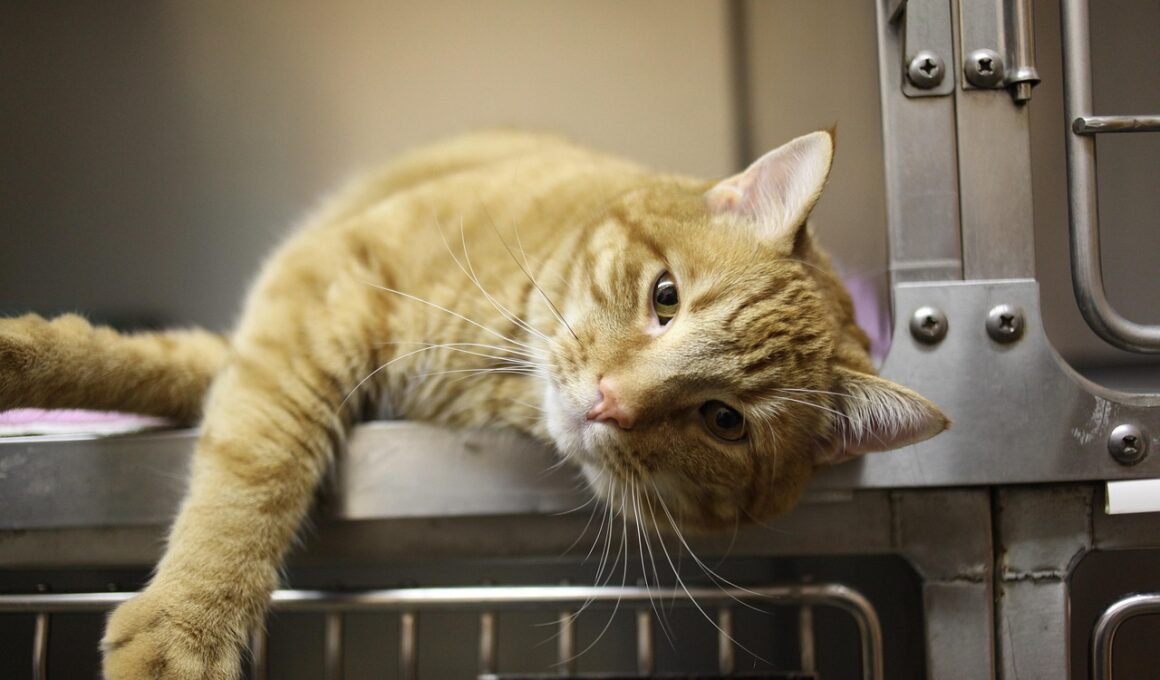Feline Behavioral Safety and Veterinary Visits: What Owners Should Know
Cats are known for their curious yet cautious behavior, making their safety during veterinary visits a top priority. One essential aspect to address is acclimating your cat to the carrier. Begin by placing the carrier in a familiar space. Ensure that it feels like a safe haven. Use treats and toys to create a positive association. It is crucial that you avoid forcing your cat into the carrier, as this might heighten their anxiety. Instead, allow them to enter voluntarily. Also, consider taking short trips in the carrier around the house ahead of the actual visit.
Before the veterinary visit, monitoring your cat’s behavior can provide key insights into their health. Look out for any sudden changes in eating habits, energy levels, or litter box activity. These changes can indicate underlying health issues that need attention. Record these observations and share them with your veterinarian during the visit. This information becomes invaluable in guiding your veterinarian to a potential diagnosis. Additionally, be aware of your cat’s stress signs, such as excessive grooming and hiding. Understanding these signals can aid in creating a calming environment, which helps ensure a positive veterinary visit for your furry friend.
Preparing for the Vet Visit
When the day of the veterinary visit arrives, keep your environment calm. Cats are sensitive to loud noises and unfamiliar surroundings. Consider using a pheromone spray in the carrier to promote relaxation before heading out. Make sure to secure the carrier in your vehicle to prevent shifting during transport. If possible, cover the carrier with a lightweight blanket to minimize visual stressors. Once at the veterinary clinic, keep a close hold on the carrier; this gives your cat a sense of security. Speak softly to your pet, reassuring them that everything will be alright.
Pay attention to the services provided by the veterinary clinic. Some vets specialize in fear-free handling techniques, which can greatly reduce anxiety. You may choose to find a veterinary practice that emphasizes cat-friendly visits. Services such as offering calming treats or allowing cats to acclimatize to the examination room can make a big difference. Ask about the clinic’s approach to stress management, as this can lead to a positive experience for your cat. Don’t hesitate to speak out if you feel your cat is becoming overstressed during the visit; communication is essential in such scenarios.
Recognizing Post-Visit Safety
After the veterinary visit, observe your cat carefully; their behavior may change due to stress or the medical procedures they received. It is advisable to create a safe and quiet space for them at home. Provide their favorite blanket, toys, and access to fresh water. Ideally, refrain from introducing new activities until they have fully recovered from any stress incurred during the visit. Monitor their health closely in the days following the appointment, as reactions to vaccinations or stress can occur. The transition may take some time, and patience is essential.
Engaging in regular wellness check-ups helps maintain your cat’s health and should not be a source of anxiety. Building a routine for vet visits can create familiarity that lowers stress levels. Focus on maintaining consistency in scheduling appointments. Try using positive reinforcement by offering treats and affection after every visit, reinforcing a sense of safety and security associated with the veterinary office. Additionally, familiarize your cat with the typical equipment used by the vet, similar to how you can introduce them to their carrier gradually. This proactive approach prepares them for future visits.
Seeking Behavioral Help
Should you notice consistent signs of stress during veterinary visits, it may be beneficial to consult a cat behaviorist. Professional help aids in identifying and alleviating anxiety. Behavioral training exercises can be employed to strengthen your cat’s confidence. Moreover, discussing any concerns with your veterinarian can yield tailored strategies. Specialized anxiety medications may also be necessary in extreme cases. Always prioritize open communication between yourself and the veterinary staff, as they can monitor your cat’s well-being and suggest ways to ease the experience further. Cats thrive in stable and nurturing environments.
In conclusion, integrating safety practices during veterinary visits significantly contributes to your cat’s overall well-being. By prepping your cat and becoming familiar with potential anxiety-relief strategies, you’ll contribute to a more manageable experience. Regularly consulting with your veterinarian will help in creating a veterinarian visit schedule that aligns with your cat’s unique needs. Finally, remember that your cat relies on you to advocate for their comfort. Your proactive approach helps them feel more secure and stress-free during necessary medical visits, contributing greatly to their health and longevity in the long run.


